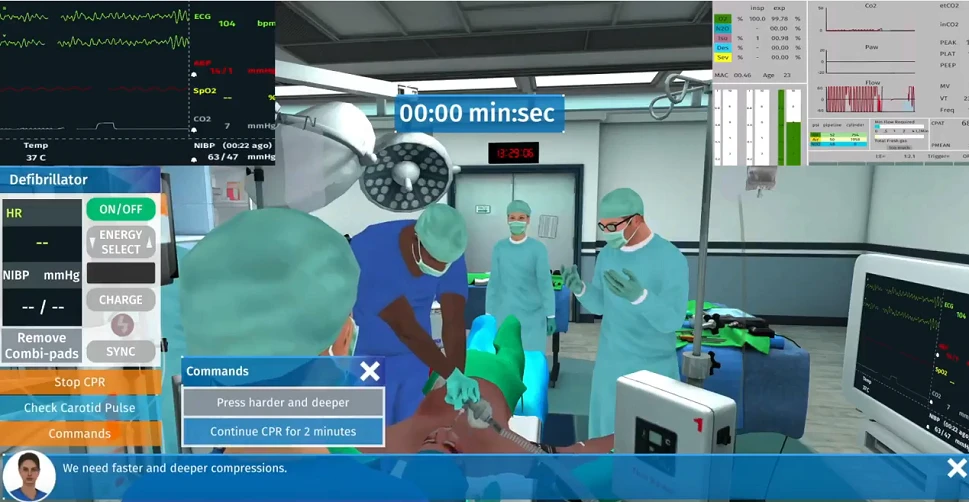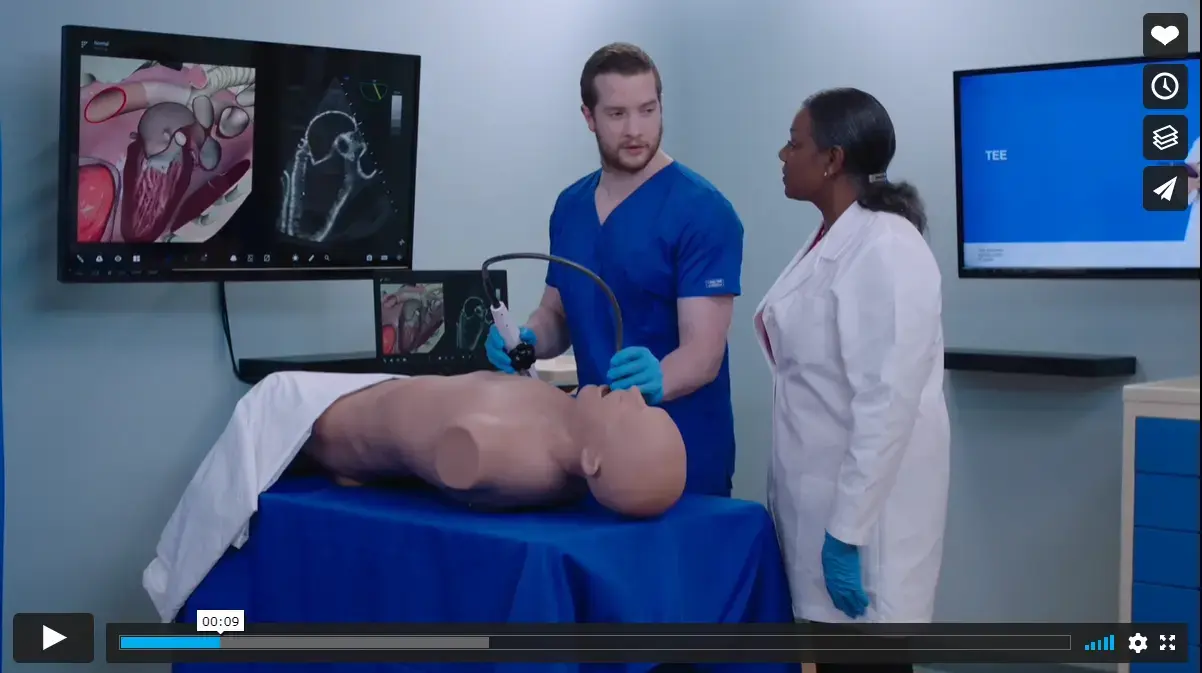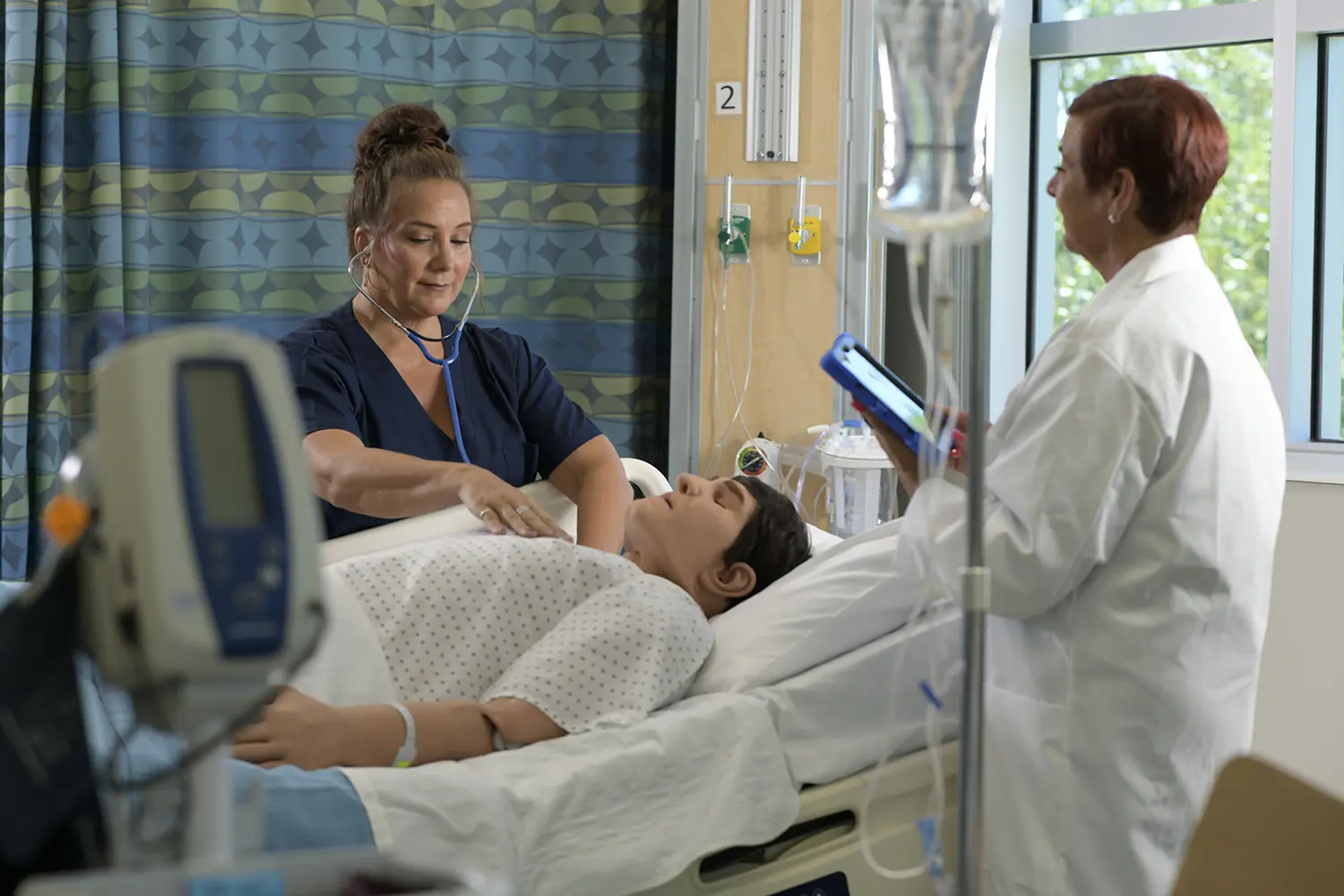CAE Healthcare Blog
Healthcare Training Advantages of Virtual Learning Environments
Feb 05, 2021

Virtual learning environments for healthcare may help to fulfill education requirements by providing a sufficiently viable replacement for mandated clinical hours (as supported by INACSL and SSH.org1).
Moreover, in circumstances where there may be a heightened risk of cross-contamination, rampant infection and person-to-person transmission of pathogens (the 2019 novel coronavirus disease, or COVID-19, for example), the ability to train remotely offers medical educators and learners a tremendous opportunity to develop and maintain clinical proficiency without physical contact.
Virtual Learning in the Age of Simulation
Virtual simulation technologies (screen-based simulation, remote learning, augmented reality/AR, mixed reality, blended and/or extended reality, and virtual reality/VR) offer a range of unique advantages for healthcare educators and facilitators to deepen knowledge and strengthen the procedural and patient care skills of their students, regardless of location. The effectiveness of healthcare training through augmented, mixed, or virtual reality and remote-enabled technologies is being proven every single day.
Educators who adopt virtual learning environments (VLEs) as a part of a curriculum are able to facilitate the enhancement of technical and non-technical skills attainment --no matter where their learners are physically located.
The Impact of Coronavirus on Healthcare Training
In late 2019, COVID-19 appeared and educators all over the world were confronted with a new challenge to learning. As the coronavirus disease is known to spread from person-to-person2, the currently known best way to minimize contagion and spread is by avoiding exposure to the virus.
The International Nursing Association of Clinical Simulation and Learning (INACSL, www.inacsl.org) and the Society for Simulation in Healthcare (SSH, www.ssih.org) issued a position statement on 'use of virtual simulation during the pandemic' on March 30, 2020. Within that statement, the simulation organizations made the following assertion:
... We can attest that virtual simulation has been used for over a decade successfully. Further, research has repeatedly demonstrated that use of virtual simulation - simulated healthcare experiences on one’s computer - is an effective teaching method that results in improved student learning outcomes...
Based on the current and anticipated shortage of healthcare workers, we propose that regulatory bodies and policymakers demonstrate flexibility by allowing the replacement of clinical hours usually completed in a healthcare setting with that of virtually simulated experiences during the pandemic.
By supporting this innovative yet effective way of teaching as a solution to address the clinical hour shortage of health professions students, education efforts will continue seamlessly, and we will support timely career progression of healthcare providers needed immediately to battle COVID-19."

Teachers, instructors, and training facilitators need to be aware of the many advantages that VLEs have to offer, including:
- Convenient, on-demand, and repeated reproduction of training scenarios that conserve material resources
- Realistic procedural practice;psychomo tor skills development; risk-free learning
- Performance of assessments and evaluations in multiple learning domains, simultaneously and/or remotely
- Unrestricted by geographical limitations, virtual learning environments allow learning to occur outside of a skills lab or classroom (i.e., via web-enabled/screen-based simulation training platforms)
The benefits of technology in training can only be truly realized with the input of informed, guided instruction within expertly-constructed curriculum that utilizes the most innovative and advanced education resources available.
Get in touch with CAE Healthcare.
Learn more about the integration of innovative, simulation training technology, and medical education.
Discover for yourself how simulation empowers better skills retention, enhances patient safety, improves outcomes, and can keep teams engaged, even while working and training from a distance.
Distance and Virtual Education Solutions from CAE Healthcare
CAE Distance Learning Suite for Nursing: Quality remote training in sensitive patient care procedures
COVID-19 Resources for Healthcare Teams, Hospitals, and Educators: Digitally-accessible content for safer training
iRIS Health Simulation Authoring Platform: Free virtual demo! Collaborate across distances while improving your training
CAE Maestro Evolve: Access your 30-day Free Trial and discover CAE Embody, our physiologically-advanced virtual patient!
Media Inquiries
Mary Beth Kennedy
Marketing & Communication Specialist


